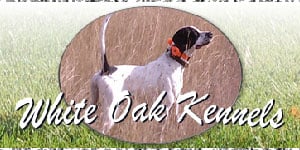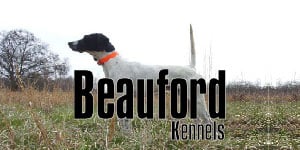Six “Military” Style Methods to Outsmart Late Season Roosters
Pheasant hunters need to take the battle to those wily ringnecks.
Pheasant hunters need to be smarter and hunt on the same level as the prairie’s court jester of the upland birds. In the animal kingdom, psychologically roosters could be diagnosed as neurotic in their erratic behavior. Their actions and caginess to avoid ending up in a crockpot, can be attributed to being mentally unstable. This makes those ringnecks that survive the onslaught of October’s easy young-of-the-year pickings much harder to hunt.
Below are half-a-dozen ways to wage guerilla warfare and outsmart late season roosters.
Use Stealth. It’s simple enough, DO NOT park near the hunting area. Pull down the road, where noise discipline is not so much of an issue. Hunters should still get “battle” ready with limited noise. Slamming doors, talking, rummaging around, barking and excited dogs can give away to what is about to happen. Pheasants can become conditioned to certain noises and make for the hills. Orange clad armies should move into fields with minimal sound.
Hunt in Silence. Hunt Slow. Talking signals roosters that something is afoot. Something bad. I know it’s difficult to cut out all talking, yelling, and laughter but that doesn’t mean no communication. Verbal communication is our own worst enemy. It betrays us when we don’t even know it. Skittish roosters start flushing and running for escape routes at the sound of spoken words or the slamming of truck doors. Pheasant hunters need to keep talking to a bare minimum. To combat roosters retreating from the fields, hunters should work out hand signals.
Late season roosters are already nervously wired at the mere hint of danger. They circle, sneak, and skulk their way around pheasant hunters. To counteract their jittery disposition, hunters need to hunt slowly. A slow pace through a field with intermittent pauses makes ring-necks fidgety. Thus reacting by launching into the air. No man’s land. In the air, roosters become vulnerable. They become targets. Their long-tails and white ring-necks are a clear indication there’s going to be some hot lead streaking towards them. Hunting slow forces roosters to change their escape plans. Hunters who vary their approach by zig zagging and stopping at various intervals will confuse roosters. This translates to nervousness, which causes birds to make hasty decisions and alter
Two Prong Attack. If for the first time hunters don’t move or put birds into the air…DO NOT give up! Make a second swing through and work the cover again. However, this time hunt the area from a different angle. Hunters should concentrate by hitting different corners and pockets. If hunting in a group, split up and hit areas within the field where key habitat points are located. Sometimes all that is needed is a second more methodical and slower pace is needed to get tight holding birds to move and make that fatal mistake of taking to the air. Chances are there are birds around, it just may take a little more pressure to get them moving. If hunting thick cover, such as cattails and thickets the more times it can be worked.
Think Thick! Pheasant hunters need to forget those picturesque flat, open grassy fields. Opt for the ugliest and nastiest cover. Cattails offer pheasant’s thermal protection, tunnels to slither through, and nooks and crannies to tuck themselves into and hide until hunters and dogs get tired of trying to bust through and wade through water and give up.
Other tough cover to hunt are thorny thickets, plum brush, multiflora rose tangles, and concentration of blow downs. Roosters will head into these areas to find sanctuary. This is where good flushing dogs come into play and work to get those roosters ousted for possible shots.
Pinpoint Transitions. Ringnecks can be found in transition zones and along edges – focus on locations where cover types mix. The corners and seams of fields that separate food from cover are good places to target. The key is knowing where the birds are trying to escape to, then getting into position to where flushing roosters can be intercepted when they fly towards cover.
Places where food, thick escape cover, and thinner loafing cover meet are perfect.
Late Attack. Just because the sun has begun to settle towards the horizon leaving only a couple of hours of legal shooting light, it can be the edge pheasant hunters need to bag a couple more roosters. Late afternoon offers prime time to hunt late day feeding roosters. Birds will be making their way from feeding areas to roosting cover. This means more birds will be walking along those seams discussed previously. It offers hunters a great opportunity to catch a rooster or two slightly overstuffed with food into making a mistake and ending up in the back of a game bag towards the truck.
Related Aritlces
WHAT TO WEAR? THAT IS THE QUESTION.
What do I wear for bird hunting? Is a valid and common question asked by new bird hunters. The answers they receive will be on both sides of the spectrum. From the very basic to high-tech. Comfort and protection are paramount when hunting the uplands, as they can be versatile in every aspect of the hunt. There’s a style to the upland ruggedness we hunt. What bird hunters wear must allow them to walk comfortably and if need be, crash through heavy and unruly thickets, brambles, thick cover, as well as up and over rough terrain in mild to extreme conditions. Wear what makes you comfortable and what you can afford, while still maintaining breathability, warmth, dryness, and durability. These attributes make for upland field excursions more enjoyable when not thinking about whether the clothes on your back will function, so focus can be to putting birds in your bird vest.
Ringnecks in the snow
Snowfalls in many states is the silent signal to die-hard bird hunters that it is time to venture out and chase ring-neck pheasants in the snow. There is much to enjoy about pheasant hunting in the snow during the colder weather months. While there are some hunters that will shun hunting in the snow and extreme cold conditions, there will be those that will find it to their liking and challenging. Hunters should be able to walk around when the snow is dry and light. However, the amount of snowfall will determine the difficulty in traversing the countryside and fields. Hunting during the winter adds a physical and mental challenge to finding and chasing winter birds.






















